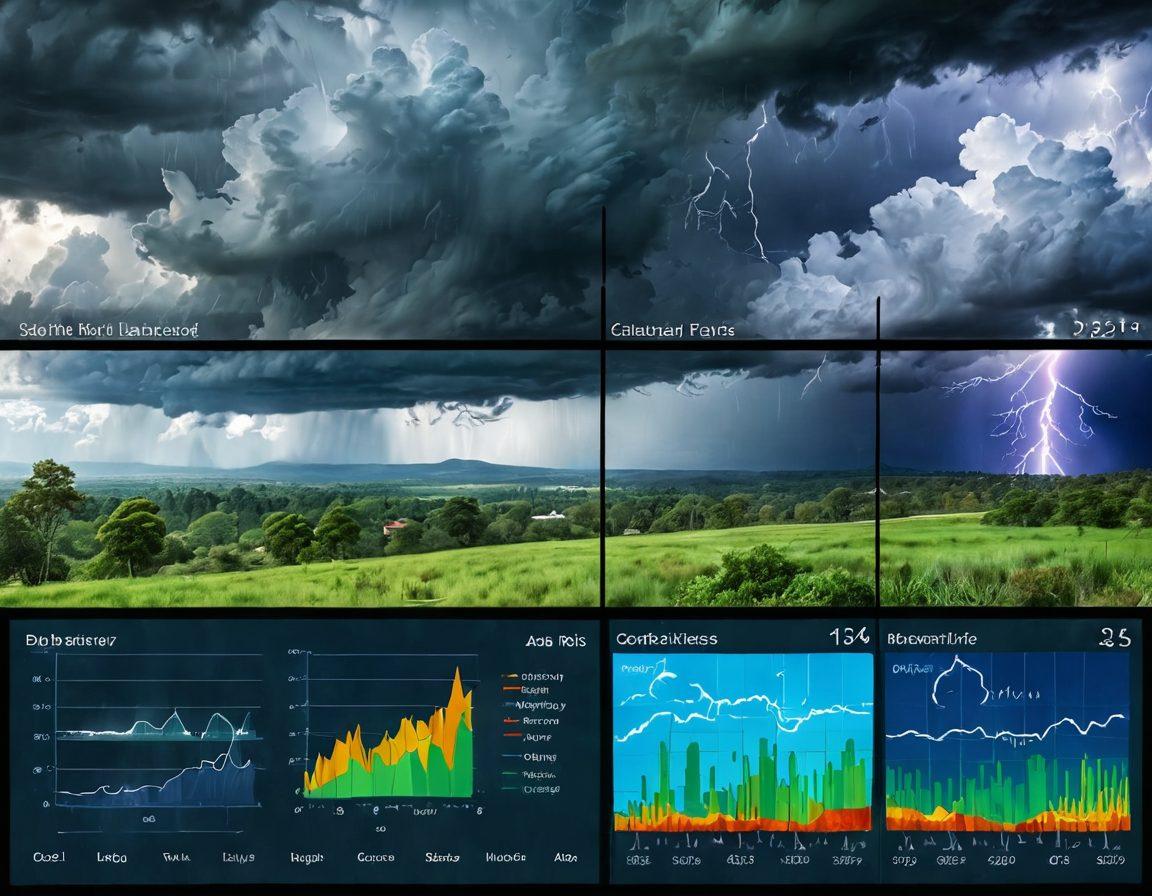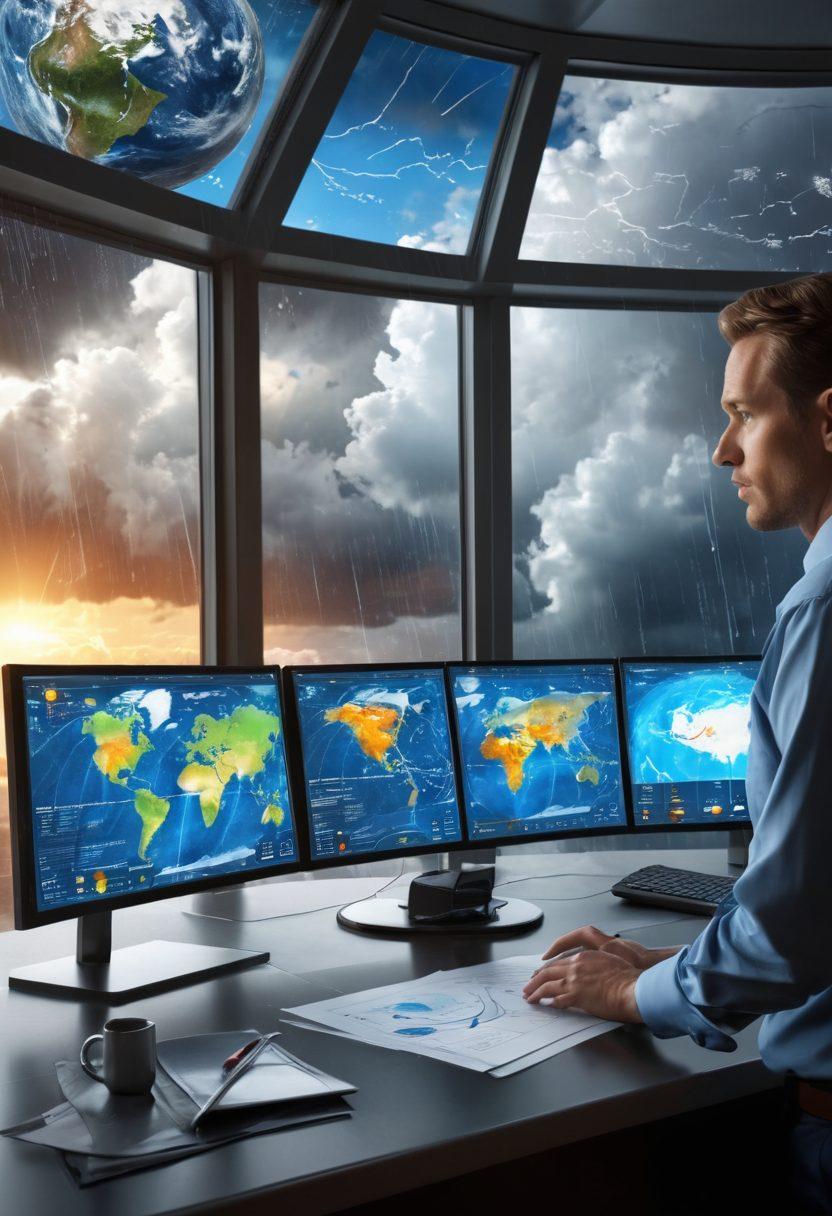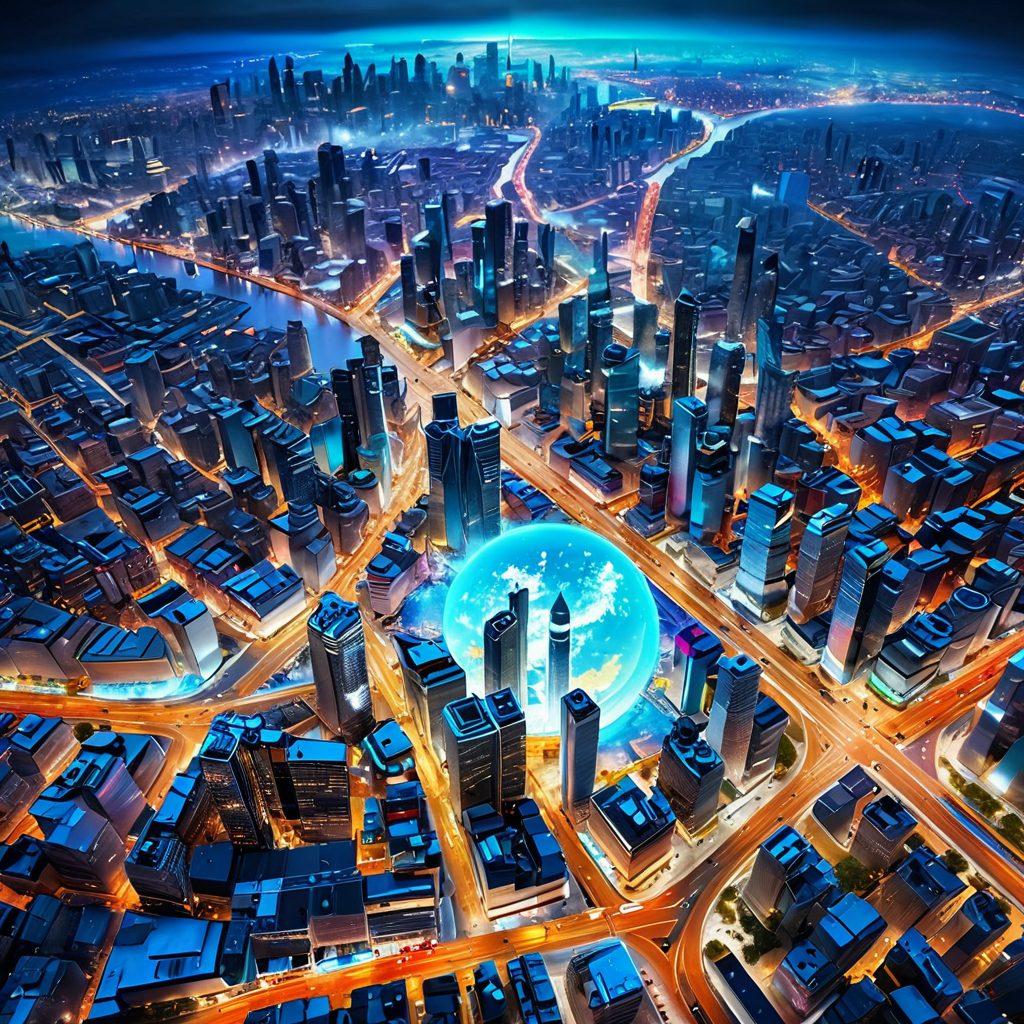Decoding the Elements: Understanding Weather Trends and Climate Change Through Advanced Analytics
As we stand on the precipice of a climate crisis, the urgency to understand weather patterns and climate change has never been greater. The world is a complex tapestry woven with atmospheric conditions, temperature shifts, and fluctuating precipitation levels that can impact our daily lives and long-term survival. By harnessing advanced analytics, we can uncover the mysteries of our climate and tackle the challenges presented by severe weather and natural disasters. The fusion of technology and environmental science is not just an academic exercise; it's a vital tool in our arsenal to predict what lies ahead.
Imagine waking up in a world where the forecast isn't just a guess but a precise reading based on vast amounts of weather data collected from advanced weather stations and satellite imaging. Stunning progress in meteorology allows us to engage in genuine weather modeling, giving us close-to-real-time weather alerts at the tap of a finger. Services like Wunderground empower communities to stay updated with local weather, through dynamic weather maps and storm tracking features. Have you ever wondered how many layers of complexity go into a simple weather forecast? It’s thrilling to dive into this world of data as we seek clarity in the chaos of climate change.
The predictions we rely on today are not just about daily temperature measurements. They reflect sophisticated weather analytics that provide insight into long-term weather trends and patterns. The ability to comprehend and forecast these changes is crucial for making informed decisions, not just for individuals but also for policymakers grappling with environmental challenges. Imagine cities planning for a future with altered precipitation patterns or rising temperatures! By analyzing historical weather data alongside current atmospheric conditions, we can craft a roadmap for sustainability in our communities.
Think of the last time you flipped on the news and watched as a meteorologist broke down severe weather scenarios or discussed the health impacts of the UV index. There’s undeniable power in having such information readily available. Through the lens of climatology, we can observe changing climate patterns and develop strategies that mitigate risks associated with environmental degradation. As weather events become increasingly extreme, the insights drawn from predictive analytics guide our responses to not just survive, but thrive amid uncertainties. What if you could help your community enhance its resilience to climate-change-induced natural disasters?
Your role is crucial in this journey, not as a passive observer, but an active participant in understanding and implementing these advanced analytics in daily life. Whether you're a student of environmental science or simply someone who cares about the planet we inhabit, every bit of knowledge contributes to our collective response to climate change. Let’s embrace the advances in weather prediction and analytics and uncover ways to safeguard our futures. After all, awareness is the first step towards action, and together we can create a sustainable narrative where humanity coexists harmoniously with our environment.
Mastering Meteorology: Predicting Weather Trends with Precision
When we think about predicting the weather, we often picture a meteorologist standing in front of a green screen, gesturing toward colorful weather maps. While that image certainly adds a touch of drama, the truth behind weather prediction is a lot more complex and fascinating. In the realm of meteorology, the ability to accurately forecast and understand weather trends is crucial—not just for planning weekend getaways or deciding what to wear, but also for safeguarding lives and property against the wrath of natural disasters. Mastering meteorology involves delving into the science of climate and utilizing advanced analytics to decode the intricate patterns that shape our atmospheric conditions.
Consider this: what if a tornado were heading straight for your town, but thanks to advanced weather data and storm tracking, you could receive a timely weather alert with enough time to seek shelter? This is the power of precision forecasting, where the convergence of technology, environmental science, and climatology ensures that we stay ahead of severe weather events. Modern meteorologists rely on innovative tools like satellite imaging, radar data, and weather stations to capture real-time weather conditions and provide accurate forecasts. The next time a summer thunderstorm rolls through, remember that meteorologists spent countless hours studying climate trends and weather models to keep you informed.
Have you ever wondered how a seemingly minor change in atmospheric temperature can lead to significant shifts in weather patterns? This is precisely what makes climate change such a pressing issue today. The interplay of humidity, precipitation, and temperature measurements contributes to a feedback loop that can intensify the severity of storms and droughts. Whether it's predicting seasonal forecasts or assessing the UV index, understanding these dynamics is essential for making informed decisions that impact public health and safety. We must ask ourselves—how can we use weather analytics to better adapt to these changes and safeguard our environment?
Moreover, it’s not just about predicting rain or sun; it’s about comprehending how these weather trends affect our daily lives. The data gathered from weather maps provides insights into air quality and temperature fluctuations that influence everything from our crop yields to our daily commute. For instance, farmers utilize accurate weather prediction to determine the best times for planting and harvesting, while city planners use climate models to develop infrastructure resilient to flooding or extreme temperatures. This interconnectedness highlights the importance of staying informed about local weather conditions and understanding how they relate to broader climate changes.
Finally, as we continue to navigate an era marked by climate change, mastering meteorology becomes increasingly important. For those of us captivated by the atmosphere, our role doesn't end with simply getting the daily forecast. Engaging with the science of weather—whether through community education or online platforms like Wunderground—can empower us to make a real difference. We should not only be consumers of weather data but proactive in applying our knowledge, advocating for sustainable practices, and understanding how to manage our impact on the environment. As we embrace the future of weather prediction, let’s strive to harness the power of technology to not just forecast the weather but to foster resilience against the challenges posed by our ever-evolving climate.
From Satellite to Street: The Future of Weather Forecasting and Climate Awareness
In a world where the climate is changing faster than ever, understanding weather trends is more crucial than it has ever been. Imagine waking up every morning with the ability to predict not just the day's weather, but how it might affect the entire week, or even the month ahead. That’s the allure of advanced analytics in meteorology, where cutting-edge satellite imaging, weather data, and complex algorithms come together to create clearer forecasts and more actionable insights. As environmental science evolves, our methods of engaging with climate change are rapidly changing too, transforming our perspective from mere observation to proactive decision-making.
How often do we find ourselves in a situation where a last-minute weather forecast changes our plans? With resources like Wunderground providing real-time weather information through interactive weather maps and mobile apps, we’re more informed than ever. But the strength of weather prediction lies not only in forecasting daily temperature or precipitation. It's about connecting these data points with the larger picture of climate change. As we look to the future, the question remains: how can we leverage these advances to better predict severe weather and adapt to natural disasters or shifts in our environment?
Weather forecasting today is a blend of science and storytelling. While studying climatology, we don’t just analyze data; we weave narratives around atmospheric conditions to present comprehensive seasonal forecasts. Picture a local farmer watching weather alerts closely to make informed decisions about planting season. As storm tracking technology becomes more sophisticated, our ability to predict and prepare minimizes risk and maximizes safety. As we delve into this new frontier of weather analytics, who wouldn’t want to be part of this weather revolution that delivers not just data, but actionable insights that enhance our everyday lives?
But the innovations don’t stop at analyzing local weather. Global phenomena such as oceanography and temperature measurements are integrated into modern forecasting models, allowing us to see connections between distant weather systems and our localized climate. For example, the rise of AI in environmental science has enabled meteorologists to analyze vast amounts of radar data, turning predictive modeling into a science of precision. A world where accurate air quality assessments and UV index readings could influence our outdoor activities is not just a fantasy; it’s becoming our new reality. But are we ready for this change?
The future of weather forecasting and climate awareness hinges on community engagement and preparedness. Imagine a world where weather stations not only inform us of temperature and humidity but also educate us on sustainable practices to combat climate change. As we become more aware of how weather trends impact our health and livelihood – from the risk of severe weather to the benefits of favorable atmospheric conditions – we must ask ourselves, how can we as individuals contribute to a larger movement of climate-conscious living? With every weather alert, report, and data point, we have the power to make informed decisions, transforming our relationship with our environment for the better.


